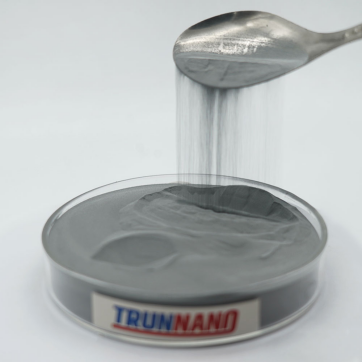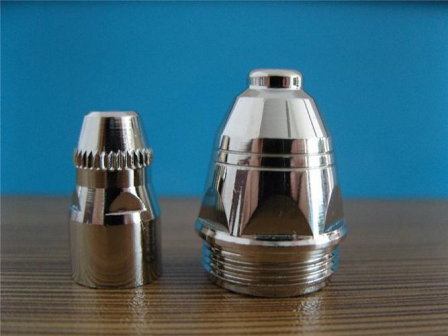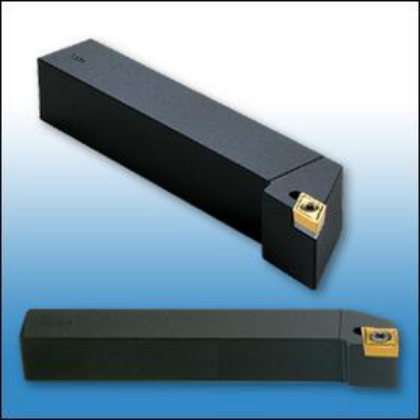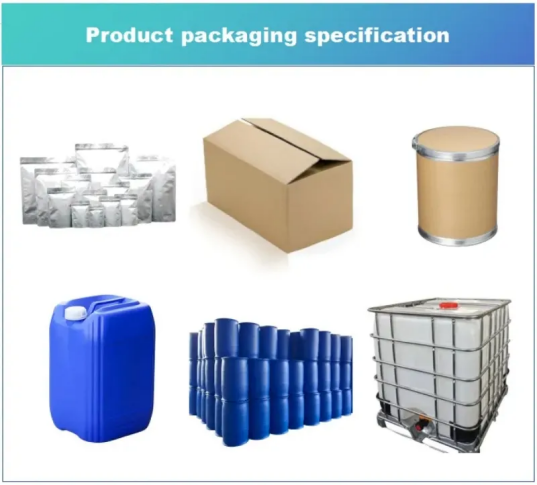Overview Of 3D Printing Alloy Spherical Tungsten Molybdenum Alloy W-Mo Powder
3D Printing Alloy Spherical Tungsten Molybdenum Alloy W-Mo Powder is a spherical alloy powder composed of tungsten (W) and molybdenum (Mo). Tungsten and molybdenum are high melting point metals with good high-temperature stability and mechanical properties. Combining them into alloys allows unique physical and chemical properties to be obtained, suitable for various high-temperature and wear-resistant applications. Tungsten (W): A metal with extremely high hardness and good electrical and thermal conductivity. It maintains high strength at high temperatures and is commonly used to manufacture high-temperature tools and components.
Molybdenum (Mo): a metal with a high melting point and good ductility. Molybdenum also has good mechanical properties at high temperatures and is commonly used in alloys to improve corrosion and wear resistance.

3D Printing Alloy Spherical Tungsten Molybdenum Alloy W-Mo Powder
Applications Of 3D Printing Alloy Spherical Tungsten Molybdenum Alloy W-Mo Powder
Spherical tungsten molybdenum alloy W-Mo powder for 3D printing is a high-performance metal powder material designed specifically for 3D printing technology. Due to the unique properties of tungsten and molybdenum, this alloy powder has a wide range of applications in multiple fields. The following are its main application areas:
Aerospace: Aerospace vehicles' engines and propulsion systems require materials that can withstand extreme temperatures and pressures. Tungsten molybdenum alloy is suitable for manufacturing turbine blades, combustion chamber components, and nozzles due to its high-temperature stability and mechanical strength.Tungsten molybdenum alloy powder can also be used to print structural components of aerospace vehicles, such as support structures, connectors, and frames, to provide necessary strength and durability.
Energy and electricity:Due to the high density, good radiation stability, and high-temperature resistance of tungsten molybdenum alloys, they have potential applications in manufacturing certain components in nuclear reactors, such as control rods, reflector layers, and shielding materials.
Tungsten molybdenum alloys can be used to manufacture electrodes and connectors for solar cells due to their good conductivity and corrosion resistance.
Tool and mold manufacturing:Tungsten molybdenum alloys are widely used in manufacturing cutting tools, such as drill bits, milling cutters, and turning tools, due to their high hardness and wear resistance. In the metal casting and plastic injection molding industries, molds printed with tungsten molybdenum alloy powder have a longer service life and higher accuracy.


Applications of 3D Printing Alloy Spherical Tungsten Molybdenum Alloy W-Mo Powder
Automobiles and Transportation:Some key engine components, such as pistons, valves, and turbocharger components, can be printed with tungsten molybdenum alloy powder to improve wear resistance and high-temperature stability. Brake system: Due to the high hardness and wear resistance of tungsten molybdenum alloy, it can also be used to manufacture components of high-performance brake systems.
Electronics and Semiconductors:Tungsten molybdenum alloy powder has potential applications in electronic devices that can withstand high currents and temperatures, such as power transistors, rectifiers, and thermionic emitters.Equipment components used in semiconductor manufacturing, such as heat treatment fixtures and silicon wafer supports, can also be made of tungsten molybdenum alloys.
Research and Education:Researchers can use this powder to study the properties, microstructure, and phase transformation behavior of tungsten molybdenum alloys to promote the development of materials science.In the field of education, this powder can be used as teaching material to demonstrate 3D printing technology and the preparation process of composite materials.

NANOTRUN(www.rboschco.com) is a trusted global chemical material supplier & manufacturer with over 12-year-experience in providing super high-quality chemicals and nanomaterials, including boride powder, nitride powder, graphite powder, sulfide powder, 3D printing powder, etc.
The company has a professional technical department and Quality Supervision Department, a well-equipped laboratory, and equipped with advanced testing equipment and after-sales customer service center.
If you are looking for high-quality 3D Printing Alloy Spherical Tungsten Molybdenum Alloy W-Mo Powder, please feel free to contact us or click on the needed products to send an inquiry.
L/C, T/T, Western Union, Paypal, Credit Card etc.

Shipment Term
By sea, by air, by express, as customers request.
Storage Conditions
1) Store in a dry environment at room temperature.
2) Avoid damp and high temperature.
3) Use immediately after opening the inner packing bag.

Q1
What types of 3D printing technologies are suitable for this powder?
Answer: This powder is mainly suitable for metal powder bed fusion (PBF) technology, such as selective laser melting (SLM) and electron beam melting (EBM). These technologies use high-energy beams (laser or electron beams) to melt and fuse powder layers into solid components selectively.
Q2
What are the advantages of tungsten molybdenum alloy powder compared to other metal powders?
Answer: Tungsten molybdenum alloy powder combines the high hardness and high-temperature stability of tungsten with the good ductility and corrosion resistance of molybdenum. This makes the components printed with this powder exhibit excellent performance in high-temperature and corrosive environments. In addition, spherical particles improve the powder's flowability, which helps achieve higher-quality printing results.
Q3
Do components printed with this powder require further processing?
Answer: Yes, metal 3D printed components usually require subsequent processes such as heat treatment and surface treatment. Heat treatment can eliminate internal stress, improve mechanical properties, and optimize microstructure. Surface treatment can improve components' corrosion resistance, aesthetics, and functionality. The specific follow-up processing steps will depend on the purpose and requirements of the components.
Q4
How to ensure the uniformity and consistency of powder during the printing process?
Answer: Ensuring the uniformity and consistency of the powder is crucial for obtaining high-quality 3D-printed components. This can be achieved by regularly stirring the powder, using a vibrating screen to remove agglomerates, and monitoring and controlling the powder temperature and humidity during printing. In addition, choosing a reputable powder supplier is also crucial to ensuring powder quality.
Q5
What are the special requirements for the storage and transportation of this powder?
Answer: As tungsten molybdenum alloy powder is a metal powder, it should be avoided from moisture, oxidation, and contamination during storage and transportation. It is recommended to store the powder in a dry, sealed container and check its dryness and purity before use. In addition, relevant safety regulations should be followed to prevent powder leakage or accidental ignition. For long-term storage, flipping the powder to prevent clumping regularly is recommended.
Q6
What are the potential application areas for using this powder-printed component?
Answer: Due to the high-temperature stability, wear resistance, and corrosion resistance of tungsten molybdenum alloy, components printed with this powder have broad application potential in aerospace, energy, petroleum and natural gas, automobiles, and tool manufacturing. For example, they can be used to manufacture nozzles for rocket engines, blades for gas turbines, oil drilling tools, and high-precision molds.
Q7
What is the cost of this powder compared to other 3D printing materials?
Answer: Metal powder is usually more expensive than plastic or non-metallic 3D printing materials. The specific cost of tungsten molybdenum alloy powder depends on various factors, including raw material prices, powder manufacturing processes, and quality. Therefore, when selecting this powder, it is necessary to consider the balance between its performance and cost comprehensively. However, this powder may be indispensable in certain high-demand applications due to its excellent high temperature and mechanical properties.
3D Printing Alloy Spherical Tungsten Molybdenum Alloy W-Mo Powder Properties | |
| Other Names Tungsten Molybdenum Alloy W-Mo Powder | |
| CAS No. | N/A |
| Compound Formula | W-Mo |
| Molecular Weight | N/A |
| Appearance | Gray metallic solid in various forms (ingot, tubing, pieces, powder) |
| Melting Point | N/A |
| Solubility in water | N/A |
| Density | NA |
| Purity | N/A |
| Particle Size | 0-20μm, 15-45μm, 15-53μm, 53-105μm, 53-150μm, 105-250μm |
| Boling point | N/A |
| Specific Heat | N/A |
| Thermal Conductivity | N/A |
| Thermal Expansion | N/A |
| Young's Modulus | N/A |
| Exact Mass | N/A |
| Monoisotopic Mass | N/A |
3D Printing Alloy Spherical Tungsten Molybdenum Alloy W-Mo Powder Health & Safety Information | |
| Safety Warning | N/A |
| Hazard Statements | N/A |
| Flashing point | N/A |
| Hazard Codes | N/A |
| Risk Codes | N/A |
| Safety Statements | N/A |
| RTECS Number | N/A |
| Transport Information | N/A |
| WGK Germany | N/A |




